Dental Hygiene

The best way to ensure a clean and healthy smile is brushing and flossing. Food particles can accumulate on teeth and turn into plaque, eventually leading to gum disease, tooth decay and even tooth loss.
Good dental hygiene can help avoid costly treatment in the future. Click on the buttons to the left to learn more about how to maintain your healthy smile.
- Step 1
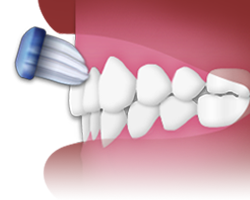
Use a soft-bristled toothbrush and a small strip of fluoridated toothpaste. Holding the brush at a 45-degree angle, move the brush in small, circular motions across the teeth.
- Step 2
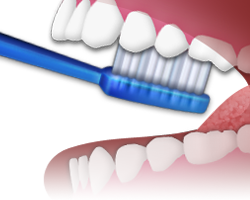
Carefully brush the chewing surfaces of your teeth, making sure to clean the back teeth and between the teeth.
- Step 3
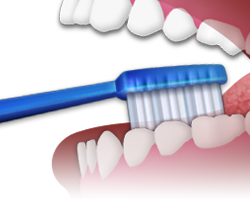
Use the same circular motion to clean the inside of the upper and lower teeth.
- Step 4
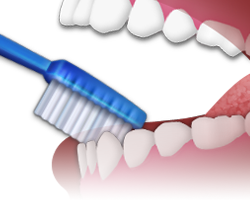
Brush the inside of the top and bottom front teeth by angling the head of the toothbrush up-and-down and brushing in a small, circular motion.
- Step 5
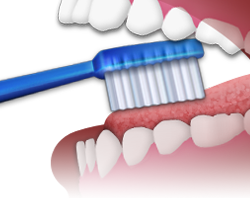
Finish by brushing your tongue and the roof of your mouth before rinsing.
- Step 1
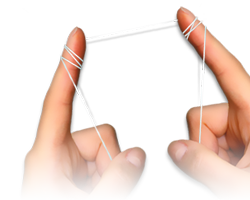
Floss at least once a day. Pull a small length of floss from the dispenser and wrap the ends tightly around your middle fingers.
- Step 2
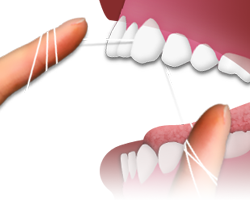
Gently guide the floss between all teeth to the gum line, including the back teeth, to remove any food particles or plaque.
- Step 3
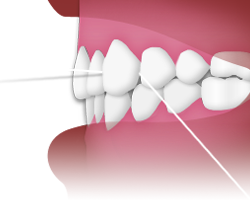
Unwrap clean floss from around your fingers as you go, so that you have used the floss from beginning to end.
- Step 1
- Step 2
- Step 3

A healthy, well-balanced diet can minimize or even completely prevent cavities and other dental problems. Limit your intake of sugary and starchy foods like candies, cookies, chips and crackers. Healthier foods, such as vegetables, low-fat yogurt and cheeses, are not only better for your overall health, but they can promote stronger, healthier teeth as well.

You should visit your general dentist twice a year (once every six months). In order to maintain a healthy smile, it is vital to have professional cleanings and regular check-ups. Your dentist will examine your teeth and provide an evaluation of existing dental problems and proposed treatment. If you have a dental emergency, you should call your dentist immediately.
Brushing
Use a toothbrush with soft bristles and a small strip of fluoride toothpaste, unless the child is under the age of 3. If a child is younger than age 3, parents should clean their child’s teeth with water and a soft-bristled toothbrush. After age 3, parents should supervise brushing. Use no more than a pea-sized amount of toothpaste and make sure children do not swallow excess toothpaste.
When you brush your teeth, move the brush in small circular motions to reach food particles that may be under your gum line. Hold the toothbrush at an angle and brush slowly and carefully, covering all areas between teeth and the surface of each tooth. It will take you several minutes to thoroughly brush your teeth. Brush up on the lower teeth, down on the upper teeth and the outside, inside and chewing surface of all of your front and back teeth. Brush your tongue and the roof of your mouth before you rinse.
Brush your teeth two to three times daily, for a minimum of two minutes, to avoid the accumulation of food particles and plaque:
- In the morning after breakfast
- After lunch or right after school
- At bedtime
As soon as the bristles start to show signs of wear, replace your toothbrush with a new one. As a general rule, toothbrushes should be replaced every 2-3 months or after a severe cold, flu or even canker sore. Do not swallow any toothpaste; rinse your mouth thoroughly with water after you finish brushing. It is important to carefully floss and brush daily for optimal oral hygiene.
Flossing
For areas between the teeth that a toothbrush can’t reach, dental floss is used to remove food particles and plaque. Dental floss is a thin thread of waxed nylon that is used to reach below the gum line and clean between teeth. It is very important to floss between your teeth every day.
Pull a small length of floss from the dispenser. Wrap the ends of the floss tightly around your middle fingers. Guide the floss between all teeth to the gum line, pulling out any food particles or plaque. Unwrap clean floss from around your fingers as you go, so that you have used the floss from beginning to end when you finish. Floss behind all of your back teeth. Be sure to wrap the floss around each tooth in a "C" shape so that the floss hugs the whole side of the tooth. Move the floss in an up-and-down motion, not a side-to-side or sawing motion.
Floss at night to make sure your teeth are clean before you go to bed. When you first begin flossing, your gums may bleed a little. If the bleeding does not go away after the first few times, let a staff member know at your next appointment.
